How Chattogram built its economic legacy
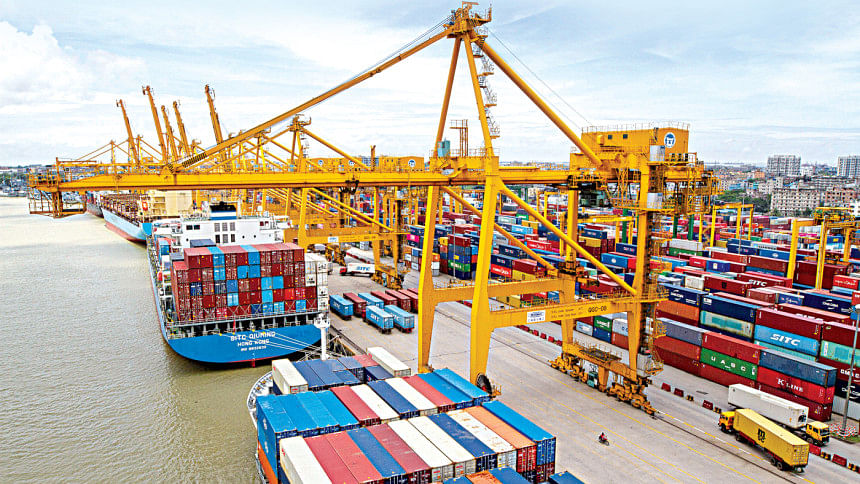
Picture a crowded harbour where the salty seabreeze carries whispers of far-off lands, where merchants of all creed and caste haggle over silks and spices, and where towering ships of all varieties – Chinese junks, Arab dhows, and Portuguese carracks – sway gently in the waters of the Bay of Bengal.
One of the most famous harbours in ancient times, the port in Chattogram has been the ultimate pit stop for traders, explorers, and fortune-seekers for over 2,000 years.
Thanks to its strategic geographic location as a natural sea harbour that offers access to vast plainlands but remains surrounded by hillocks, the anchorage in Chattogram has featured in some of the richest chapters of history.
The maritime Silk Road -- the ocean-based sibling of the famous caravan trails -- ran straight through the Bay of Bengal, with the jetties in Chattogram being the star player.
All the way back in the 4th century BC, sailors were dropping anchor here, turning the Bay of Bengal into a buzzing hub of commerce.
By the 2nd century AD, the legendary geographer Claudius Ptolemy had inked the location onto his world map, mentioning it as one of the finest ports in the Eastern World.
Five centuries later, Chinese traveller Xuanzang declared it "a misty beauty emerging out of the misty water", as mentioned in Routledge's International Dictionary of Historic Places. Much later, even Marco Polo was said to be left in awe of the lush landscape that provided the backdrop for the harbour.
Throughout chapters of chaos, conquest and colonisation, the port of Chittagong always emerged as a thriving commercial hub, whether it was when Arab merchants dominated in the 9th century or under Portuguese hold in the 1500s.

WHERE PIONEERING INDUSTRIES FOUND THEIR FEET
Since days of yore, the bustling landscape of trade and commerce due to the proximity to the port, in combination with hinterland connectivity, has seen the Chittagong region rise to the top as the go-to spot for export-oriented industries.
For example, although Sylhet dominates the scene now, tea production in Bangladesh started in a hilly area of Chattogram in 1843.
The region also sparked the boom in export-oriented readymade garments, which now account for over 80 percent of the country's export basket, in 1977, when the nation's first RMG unit was built in Kalurghat industrial area.
Furthermore, the oldest and most historic tea trading hub in the country was established in the region in 1949, followed shortly after by the country's pioneering steel re-rolling company, which found a home in the region's Nasirabad industrial area in 1952.
Additionally, the country's only state-owned fuel oil refinery, Eastern Refinery Limited (ERL), was established in the region in 1968. Currently, a subsidiary of the Bangladesh Petroleum Corporation (BPC), which is also headquartered in the division, ERL has a refining capacity of 1.5 million tonnes.
Likewise, state-owned Chittagong Urea Fertiliser Limited (CUFL), along with its two associated units, Diammonium Phosphate Fertiliser Company Ltd and local multinational joint venture plant Karnaphuli Fertilizer Company Limited, are located on the southern bank of the Karnaphuli river, with jetty facilities near the port.
Playing host to the country's premier seaport also made Chattogram the ideal venue to host the nation's first export-processing zone, which was developed in South Halishahar in 1983.
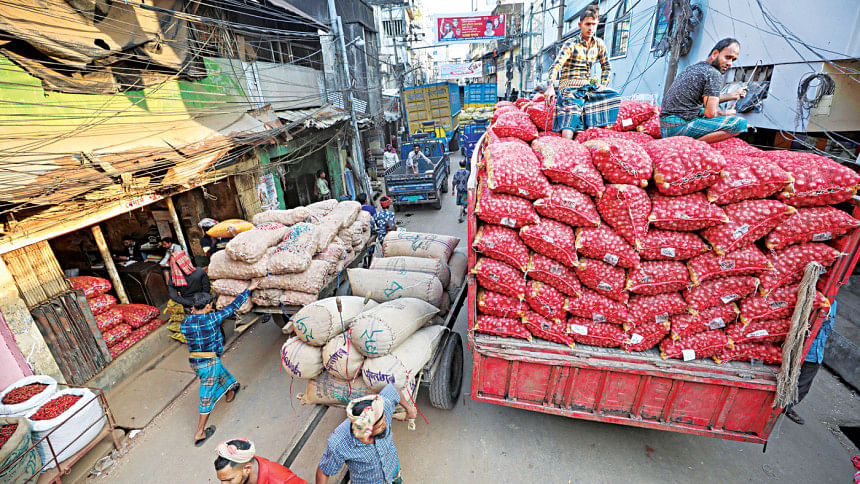
SITAKUNDA: A STORY OF TRANSFORMATION
The numbers, provided by the Department of Inspections for Factories and Establishments (DIFE), show that there are a total of 4,007 registered manufacturing industrial units in greater Chattogram, from Feni to Cox's Bazar, excluding those in export processing zones. Of these, around 2,500 are now operational.
Data from Industrial Police shows that around 1,650 small, medium and heavy industrial units are now operational in Chattogram.
To take a closer look, one must journey to this south-eastern part of the country. And among stories of industrial development, the Sitakunda upazila is a standout.
Before the Dhaka-Chattogram highway, widely considered the country's economic lifeline, reaches the port city, it traverses through this upazila.
This twist of fate has turned the nearly 500 square kilometre sub-district into a bustling industrial hub, with over 200 industrial units springing up.
On one side of the highway, along the sandy beach on the Bay of Bengal, you will find the world's largest ship-breaking industry by volume, handling around half of the world's discarded ships.
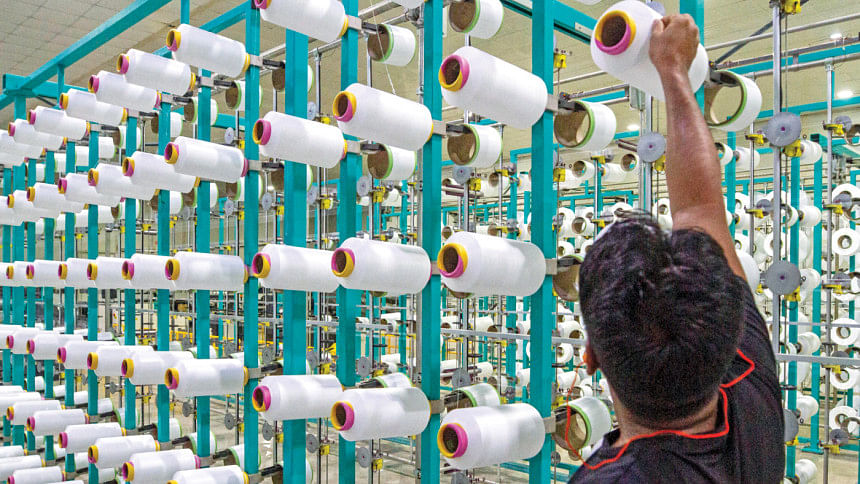
On the other side, one can witness various industrial units ranging from steel re-rolling plants, corrugated iron (CI) sheet manufacturing units, cement factories, glass factories, jute mills, textile mills, vehicle assembling units and even container depots.
Four large steel plants of leading business groups -- Abul Khair Group, BSRM Group, GPH Group Steel Mills and KSRM -- and around 30 traditional and semi-automated mills are located in Sitakunda, meeting nearly 50 percent of the nation's total demand for steel.
Four out of the five major CI sheet-making plants are also set up in the sub-district, meeting 70 percent of the country's total demand. These four plants are owned by Abul Khair Group, PHP Family, KDS Group and TK Group.
Despite the massive scale of operations there, Sitakunda remains just a small glimpse into the overall scenario in recent times.
Looking back at history, the Chattogram region's impact on key domestic industries becomes undeniable.
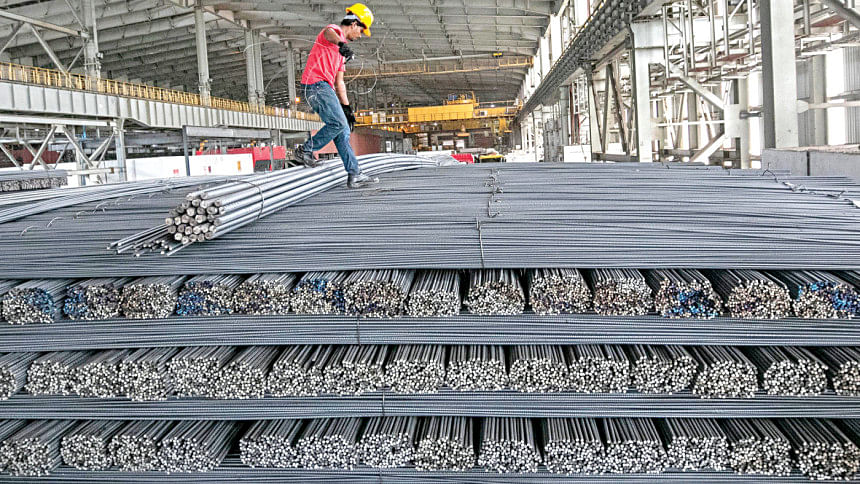
THE BIRTHPLACE OF THE STEEL SECTOR
There was no steel plant on Bangladeshi soil until 1952. That year, a few merchants hailing from Gujrat took separate initiatives, setting up three or four small manual rod-making plants in Chattogram.
While the other initiatives did not progress well, Akberali Africawala's family, the founders of the first plant under what is now the BSRM Group, found success.
The country's first billet-making plant, the state-owned Chittagong Steel Mills, was also founded here in 1967 before being shuttered 39 years later, paving the way for private initiatives in the sector to flourish.
Although there are around 42 steelmakers in Bangladesh, the four leading producers are based in Chattogram and currently cater to around 53 percent of the nation's total demand, according to market studies and industry insiders.
These four major steelmakers are: Bangladesh Steel Re-Rolling Mills (BSRM), Abul Khair Steel (AKS), GPH Ispat and Kabir Steel Re-Rolling Mills (KSRM).
According to BigMint, a platform for commodity price reporting, market intelligence and consulting, BSRM caters to around 25 percent of domestic demand while AKS contributes 14 percent, GPH 8 percent and KSRM 6 percent.
At present, the country's steel-makers have a combined capacity of 90 lakh tonnes each year against an annual requirement of around 70 lakh tonnes. A BigMint study shows that steel factories in Chattogram account for around 62 percent of total steel-melting capacity.
BSRM Managing Director Aameir Alihussain said Chattogram has become the place to be for all heavy industries, not only the steel sector, mainly due to its proximity to the port.
Since the steel industry is highly dependent on imports for raw materials, Alihussain said the advantage of being as close to the port as possible comes in the form of low transport costs.
"If you set up a factory anywhere else, such as Dhaka, you need to transport raw materials all the way to Dhaka, and then the finished products need to be brought here again for sale. That makes transport costs very high," he said.
No steel factory located in Dhaka sells its products in the Chattogram market since it is unviable, he added, saying that heavy industry must be set up in Chattogram.
HUB FOR CI SHEET INDUSTRY
Another pioneering moment came with the establishment of the state-owned Chittagong Steel Mill in 1967, signalling the beginning of domestic production of corrugated iron (CI) sheets used widely for housing and factory roofing.
However, this factory proved inadequate to meet domestic demand.
So, the private sector stepped up in the mid-80s, with some Chattogram-based businesses initiating CI sheet production by importing intermediate raw materials.
Between 1998 and 2004, five Chattogram-based industrial groups, namely Abul Khair, PHP, TK, KDS and S Alam Group, set up large factories to manufacture raw materials such as cold rolled coils to produce CI sheets.
At present, these five manufacturers control 99 percent of the CI sheet market.
These factories have also invested in producing more durable and multi-dimensional CI sheet products.
SHINING BRIGHTEST IN SHIP-BUILDING
Around 200 registered shipbuilding yards are active across the country, most of which are located in the Narayanganj area.
However, these are mostly conventional operations making commodity and passenger vessels for domestic use.
In the past 25 years, at least 20 shipyards have been modernised and are now capable of building international standard vessels upon extensive modification.
Two out of these 20 shipyards, namely Chattogram-based Western Marine Shipyard and Dhaka-based Ananda Shipyard and Slipways Limited, have set a new benchmark by building and exporting a total of 44 ocean-going vessels since 2007.
Chattogram's stake in this particular segment is also higher than Dhaka's. Out of the 44 ships exported from Bangladesh so far, 34 were built by Western Marine.
The country's first export processing zone was set up in Chattogram in 1983. However, although it offered a sprawling 453 acres of land, only a few industrial units called it home.
In the 42 years since, the number has climbed to 144, including 78 RMG factories.
Since all 501 industrial plots in the zone were allocated around 15 years ago, currently, the factories here are expanding vertically.
The factories at the Chittagong Export Processing Zone exported goods worth $1.8 billion in the first nine months of this fiscal year.
The largest privately-owned EPZ, the Korean Export Processing Zone (KEPZ), was also set up in Chattogram's Anwara upazila in 1999.
A subsidiary of the South Korean Youngone Corporation, the KEPZ currently hosts 48 industrial units, largely under the ownership of Youngone.
Presently, KEPZ factories export goods worth approximately $400 million each year.
Another state-run EPZ, named the Karnaphuli EPZ, was set up in 2006. It now has 48 industrial units, including 23 RMG factories, employing over 77,000 individuals.
'COMMERCIAL CAPITAL' IN NAME ONLY
Although the country's second-most populous city is often termed the commercial capital in modern day, many believe it remains a mere political slogan in light of the challenges that the city and the region as a whole still face.
A lack of proper infrastructural development and policy support, courtesy of the negligence of policymakers, forced many entrepreneurs to gradually shift their businesses to Dhaka.
Yet, the region remains at the heart of the country's economy, and the reason for that is simple.
The Chattogram port is the premier driver of the country's economic engine, facilitating 92 percent of Bangladesh's seaborne trade while handling 98 percent of the country's total containerised goods transport.
However, its immense economic potential is stifled by challenges brought on by inadequate infrastructure development and a heavy reliance on Dhaka for crucial regulatory support for business.
Congestion at the Chattogram Port, higher cargo handling costs, higher logistics and transport costs, and inadequate transportation networks hinder the city's economic growth.
Satyajit Barman, head of grain in TK Group, said almost 85 percent of the food grain trading business, once based in Khatunganj, has shifted to Dhaka due to exorbitant cargo handling and transport costs.
Bad management of warehouses and illogical weight limits on carrying cargo transport along the Dhaka-Chattogram highway have also had an impact.
Most businesses stressed the need to address these issues to help Chattogram realise its full potential.
From its golden days to its pivotal role in Bangladesh's industrial rise, Chattogram has always thrived at the intersection of history and opportunity.
Yet, for all its past glory and present potential, the city's future now depends on overcoming infrastructural bottlenecks and policy neglect.

 For all latest news, follow The Daily Star's Google News channel.
For all latest news, follow The Daily Star's Google News channel. 





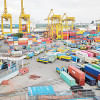


Comments